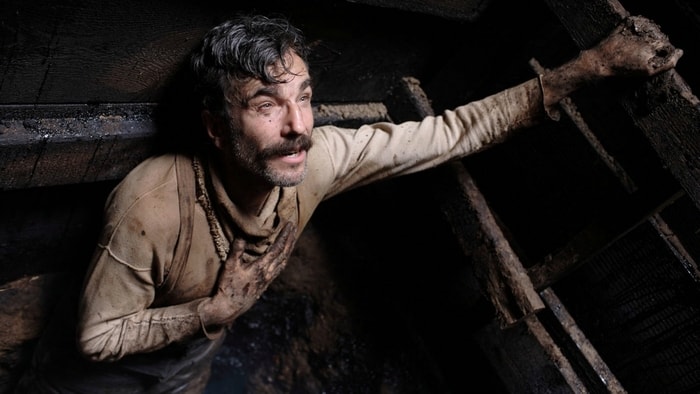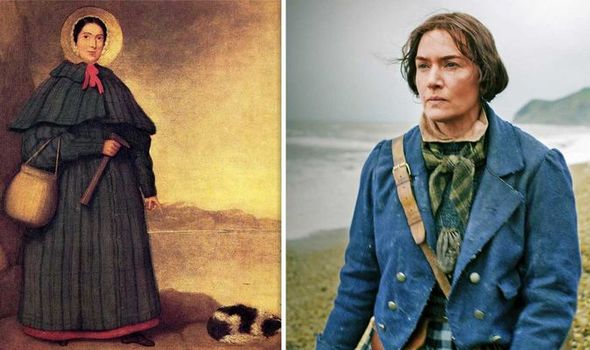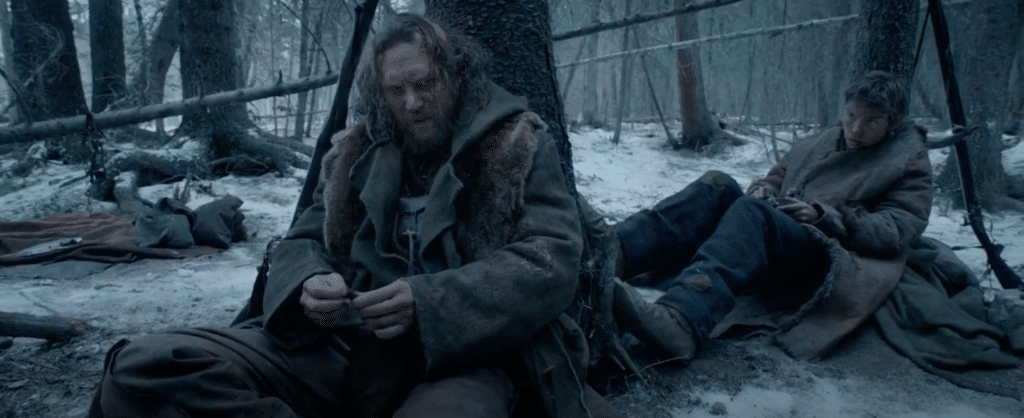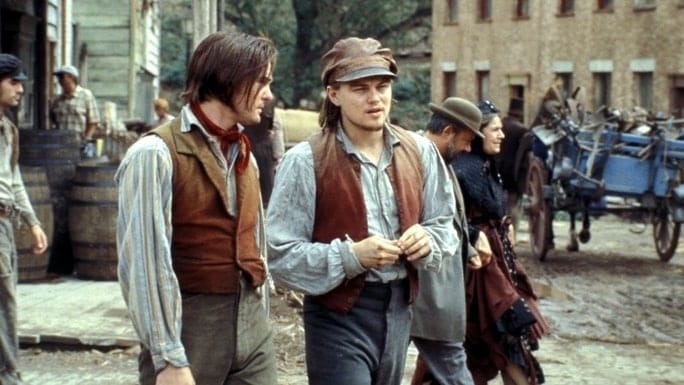Table of Contents
- What is Historical Fiction?
- The 10 Key Elements of a Historical Fiction Script
- 1. Pick a Moment in History and Explore Surrounding Events
- 2. Plant Verbal and Visual Seeds
- 3. Create Convincing Characters
- 4. Explore Complex Relationships
- 5. Pay Attention to Manners of Speech
- 6. Get a Feel For How People Lived
- 7. Cast Your Net Wide
- 8. Utilize the Power of Setting
- 9. Explore Contrasting Perspectives
- 10. Consider Alternate Histories
- Historical Fiction: In Conclusion, A Match Made in Heaven
What is Historical Fiction?
At face value, the definition of historical fiction is simple: a fictional story set against a real time period in the past. It is when we start to interrogate what constitutes ‘the past’ that the definition becomes blurry. Here, the complexities of the genre begin to unravel. How far back in time does the screenwriter have to go for their work to become a historical fiction script? 5 years? 50 years? 500 years?
The problem only becomes more convoluted when we consider the audience and their relationship to the past. For those who may have lived through the time period in question, it is far less likely to seem suitably historical. Given that all screenplays are set in some kind of time period, on whose authority can we distinguish historical fiction?
As a general rule of thumb, it is considered that a minimum of 50 years is a sure indicator of ‘historical’ writing. Ultimately, it is the objective of a historical fiction screenplay to take readers outside of their own moment in time and transport them to a period of events beyond their own reality.
The most important thing to remember when writing a historical fiction script is to create a story that could not have occurred at any other moment in history. Your script should reflect the period in vivid detail. From what they had to breakfast, to the type of shoes they wore, your screenplay should serve as a time capsule of the everyday experiences of your characters. If it can succeed in doing so, it can succeed as historical fiction.
Below we’ll explore the 10 essential steps to achieving a convincing historical fiction script. What makes historical fiction and what are the key elements of writing it?
The 10 Key Elements of a Historical Fiction Script
1. Pick a Moment in History and Explore Surrounding Events
The first step to any historical fiction script is picking a moment in history and deciding why it matters. Every sequence of events has a chain reaction. And it is your job to prove this to the audience.
Integral to this process is the exploration of surrounding events and figuring how they can feed into the plot of your story. Ask yourself: how can the peripheral events that occurred during this period of history have a meaningful impact on the direction of my script?
Let’s take a look at Paul Thomas Anderson’s 2007 film, There Will Be Blood. Set in California at the turn of the 19th century, the film’s fictional plot is driven by the factual events that surrounded the oil boom across the course of the early 20th century. For example…
- Prior to the advent of pressure control systems in the 1920s, oil mining was frequently accompanied by gas blowouts.
- Noting this fact, Anderson writes a gas blowout into his script.
- This blowout will, in turn, deafen the protagonist’s son and destroy their drilling infrastructure.
- Furthermore, at the film’s end, Daniel Plainview, our protagonist, is visited by Eli. Eli confesses to having lost his money in The Wall Street Crash.
- The reference is subtle. Anderson has not made the Crash a momentous feature of his script. Nor has he discussed its occurrence beyond its implications in this single scene.
- But he has used a peripheral historical event to credibly justify the economic status of his character.
You must research in as much possible depth significant events that occurred in relation to your chosen time period. By incorporating historical events in subtle and nuanced ways, you are creating a plausible fictional story against a persuasive historical backdrop.

2. Plant Verbal and Visual Seeds
Synonymous with the concept of hinting at contemporary events and backstories is the concept of verbal and visual seeds. These are discreet, off-the-cuff points of reference that hint at a wider world outside the events of your story.
These seeds encourage the audience to envision a much larger universe lurking beyond the image on screen.
But be careful, if you are going to use dialogue to hint at a wider context, it must be authentic. Nothing pulls you out of a film like a character reciting lines of facts, figures, and historical data. That is not how people communicate now and it isn’t how people communicated then.
Don’t have deference to the past in this regard. Try and conjure how you relate to contemporary events now. This will lead you to imagine how characters in the past may have expressed their relationship to important events occurring in the wider world.
Think not of conveying important information to the audience but of how this information affects the characters at hand. This is the route to avoiding all exposition in general. Don’t strain to convey the time period to the audience. Instead, let the characters interacting with the context do this for you.
3. Create Convincing Characters
When writing a historical fiction script you have the option of either inventing fictional characters or selecting real historical figures.
In the case of historical figures, there are a multitude of different ways of going about choosing your characters:
- People who have been overlooked or side-lined in historical scholarship. Take Francis Lee’s 2020 romantic drama film, Ammonite, for example.
- The film is inspired by the life and works of 19th-century palaeontologist, Mary Anning. Lee observed that there had been virtually nothing written about Anning by her contemporaries.
- This allowed him to tell his own version of events. But it also sheds light on a highly influential, yet widely neglected figure.

2. People enshrouded or attached to a notorious history.
- Controversial figures afford the screenwriter the opportunity to investigate the complexities of their past, unravelling their narrative in new and stimulating ways.
3. People who have led especially difficult but interesting lives.
- When writing about a particular moment in history, it is worthwhile to research those who bore the brunt of history.
- These may be social, economic, or political difficulties. The figures involved often have the most interesting stories to tell.
4. Characters who are are a part of a crucial historical event.
- It’s important that in this, the characters must be active and not passive. And this is why characters are usually at the centre of these historically significant points and not just witnesses to them.
- Take The Last Duel, for example, which tells the story of the participants in the last officially recognised judicial duel fought in France.
Research the Character
Whichever route you choose, when it comes to bringing a historical figure to life, you must research the full extent of their history. If we meet a character in their 50s, the screenwriter cannot neglect the previous 50 years of their life. Even if these previous years are not shown in the story itself, they must inform the character in this moment.
And if this history is not attainable then the imagination must fill the gaps. Pick out small, seemingly inconsequential parts of the character’s history to create a fuller, more complex character. This is a key part of the ‘fiction’ in ‘historical fiction’. We cannot know everything about a historical figure. But the purpose of fiction is to illuminate the imagination and create connections with characters.
Consider the context and where research might not be available about the character specifically, make up for it with period research. Creating the perfect historical fiction character is finding a convincing balance between realism and connection. The character must be someone the audience can recognize but also someone who comfortably fits within the historical context.
4. Explore Complex Relationships
Another important aspect of the character profile of historical figures is their relationships. As part of your research, you must work to figure out:
- What relationships don’t we know about?
- Which relationships would we not have expected?
- And how do these relationships in the past function differently than they would in the present?
The answers to these questions will help yield a full and unique character depiction.
Take Yorgos Lanthimos’ 2018 period black comedy film, The Favourite.
- The film is an in-depth exploration of the relationship between Queen Anne and cousins Sarah Churchill and Abigail Masham.
- It re-imagines the intimacies of the relationship between the Queen and these two women.
As you might imagine, there is no firm evidence that Anne and Sarah were lovers, nor that the Queen was romantically entangled with Abigail. In fact, Anne’s biographer notes that Anne was famous for her “prudery, and her strong sense of Christian morality”.
Instead, the film uses the historical evidence in support of a strong competitiveness between these women in order to re-envision the complexities of their relationship. The screenwriters have used their knowledge of the characters to project an illusory impression of their relationships.
Historical fiction does not have a direct responsibility to depict fact or even tell the truth. What matters is that the screenwriter builds upon their knowledge of history in thoughtful, interesting, and authentic ways. This will tell a truth of its own, which is the entire point of fiction in the first place.

5. Pay Attention to Manners of Speech
When it comes to speech, there is an important distinction to be made between accuracy and authenticity. Entering into a historical fiction script, we are entering into a fictional universe. Whilst the costumes, events, and backdrop may be historically factual, the sequence of events exist solely for the purposes of the film.
With this in mind, it can often be more effective to strive for authenticity over complete accuracy. This is especially true in cases where it may be near impossible to replicate the precise historical language and style of dialogue.
Tony McNamara, co-screenwriter of The Favourite, notes how he privileged the comedic over the credible:
“That was the thing about the dialogue [in The Favourite] –I don’t know how they spoke, so it doesn’t matter to me how they spoke… It’s how I imagined they would speak. And most of all, we wanted it to be funny.”
As long as your speech is authentic to the world you have created, you will succeed in convincing your audience. The further you go back in history, the harder it is to pinpoint the exact language and speech the characters would have realistically spoken in.
Some writers may be thrilled by the prospect of striving for such authenticity and make it their goal. But unless it is your specific goal, don’t let the finer points of accuracy get in the way of the creative process.
Furthermore, that may not always be the screenwriter‘s job in the first place. Often productions will have experts weighing in later on in the development process. So get the dialogue on paper first and worry about its specific accuracy later.
6. Get a Feel For How People Lived
Historical fiction is all about conveying a feeling of how people existed during this period of time. It is part of your job to get to grips with what this meant. This can range from finding out how they had fun, what they had for dinner, to how places smelt and sounded.
A successful historical fiction script is perceptive of the small nuggets of historical information that will allow your audience to see the past through the eyes of your characters.
Even if most of the tiny details end up being the responsibility of the makeup, props, and set department, it is the responsibility of the writer to have fully absorbed the atmosphere of the period.
Take Alejandro G. Iñárritu’s 2015 Revisionist Western, The Revenant.
- Set near the Missouri River in the early 19th century, the story is a fictional account of real-life frontiersman, Hugh Glass, and the armed conflict between the Arikara tribe and the American frontiersmen.
- Near the beginning, we see John Fitzgerald and Jim Bridger sitting with a fatally injured Glass.
- As they wait for him to die, Bridger notices a large hairless patch on Fitzgerald’s scalp.
- Bridger asks Fitzgerald if it was the Arikara people that had done this to him.
- Fitzgerald describes the attack, recalling that the Arikara tribe had turned his head ‘inside out’.
Scalping was a Native American tactic used as visual evidence of an attack on their victims. Iñárritu uses this small detail to set the atmosphere of the scene and strengthen the depth of his characters and their backstory.
Minor details help create a convincing whole. Getting a feel for how people lived is dependent on retrieving the seemingly inconsequential pieces of information and threading them throughout your script to bring an authentic past back to life.

7. Cast Your Net Wide
Above all, the strength of a historical fiction script is founded on the strength of the research.
Avoid confining your research to the beginning and end of your story. No point in time exists independently of the rest of history, and neither should your script. You should familiarise yourself with the 50 years preceding and following this moment in history, even if your characters can’t.
Researching a historical fiction script is akin to researching a thesis. That is to say, it should involve falling down a rabbit hole of primary material. It is in libraries, museums and galleries where you will find the gems of hidden information that will help deepen the credibility of your script.
In addition, referring to primary sources such as letters and diaries will help elucidate the kinds of slang and locutions from the period. But it will also help further your understanding of the day-to-day habits of the people that lived during this moment in time.
But be wary, when it comes to writing your characters, you must ensure that they are not prescient about the world that is to come. With the benefit of foresight, a screenwriter could all too easily fall into the trap of incorporating modern content into an absent historical moment.
All that your characters are trying to do is survive through their own moment in history. They are not cognizant of what happens in the future nor are they working to alter it.
8. Utilize the Power of Setting
When it comes to distinguishing historical fiction from other genres, we are immediately drawn to thinking about the visuals. Whether it be through costumes, wigs, or furniture, historical fiction films aim to create a striking, historically recognizable picture.
Whilst this is largely another element that is the responsibility of other on-set departments, the screenwriter must still consider how the difference in setting works to influence their plot.
Ask yourself:
- How does the way the setting functions in the past differ from the way it functions in the present?
- And how does this affect the way my characters exist and conduct themselves?
In the case of The Revenant, a film set against extremely violent weather conditions, the setting emerges as inextricable from not only its plot, but the audience’s relationship with the story world.
At its core, the relationship between the characters and their surroundings is the backbone of any historical fiction script. This is the case in the barren landscape of The Revenant (especially lacking as they do in modern luxuries!) just as it is in the bustling city of Gangs of New York.

9. Explore Contrasting Perspectives
As part of his research for Mary Anning in Ammonite, Francis Lee describes :
“I could only really find two descriptions of her, in letter form. One described her as lovely and sweet and very nice with children. The other one described her as miserable and said her shop was rubbish and dirty! And I thought, well, this is great: there’s the complexity of the character.”
Contrasting perspectives serve as the single most essential basis for creating multifaceted, dynamic, four-dimensional characters. When it comes to historical figures, there are an endless stream of questions pertaining to the complexity of their image. For instance:
- How are their actions counterintuitive to their sense of self?
- How are they viewed through different lenses by different people?
- Why are they vilified by some and revered by others?
- How do their relationships impact the public perception of their character?
By uncovering contradictory viewpoints, you are challenging previously held assumptions and helping shed new light on historical figures.
10. Consider Alternate Histories
Within the universe of historical fiction subsists multiple sub-genres. This includes alternate history, speculative fiction, and ahistorical fiction. Many of these sub-genres are interested in how we can subvert the audience’s expectations and turn key moments in history on their head.
Take, for instance, Quentin Tarantino’s Once Upon a Time in Hollywood.
- Set in 1969 Los Angeles, the film follows a fading actor and a stunt double navigating the changing landscape of Hollywood.
- Looming behind this narrative is the threat of the infamous Tate murders by the Manson family. Upon introduction to Tate, the film begins its descent towards the seemingly inevitable.
But we must always expect the unexpected. And in true Tarantino fashion, the real sequence of events is thrown off-course. Instead of Tate’s murder, the audience is presented with a highly absurdist, extremely violent fictionalisation of the murder of the Manson family.
Once Upon a Time in Hollywood serves as an example of the ways a screenwriter can manipulate the audience’s sense of historical reality. The crucial twist chimes with the film’s themes, centring around the protagonist‘s sense of grandeur and the general desire in Hollywood for a hero to save the day.
Alternate histories afford the writer the opportunity to subvert what the audience thought they may already know about history. And they can be used to make a different kind of thematic point than might be expected. Furthermore, they can encourage the audience to question the true nature of events and the line between fact and fiction.
Historical Fiction: In Conclusion, A Match Made in Heaven
With no moment in time off-limits and an endless amount of historical figures to choose from, a historical fiction concept can sprout from anywhere, at any point in history.
- Reliant on in-depth research and curious, undiscovered details, historical fiction scripts should allow the audience to envision a whole world beyond the lens of the camera.
- By planting both verbal and visual seeds throughout your script, the audience can be satisfyingly convinced that the fiction you have created could feasibly exist at this precise moment in history.
- An authentic representation of a period in history is founded on the minute details of day-to-day life. How it smelt, how things tasted, how people had fun; these are the core elements that the screenwriter must build upon in order to bring the past back to life.
Historical fiction does not have a responsibility to depict fact. Authenticity does not equate to accuracy. Instead, it is the screenwriter‘s responsibility to create a historical world that is immersive, entertaining, and convincing for the audience.
Historical fiction does not need to tell the truth nor does it need to offer the audience a history lesson. At its core, what matters most when writing a historical fiction script is creating a story that could not have occurred at any other moment in time. This is why a historical fiction script can be so powerful. It captures the unique power of storytelling to provide an intimate witness to important points of our shared history.
In Summary
The definition of historical fiction is simple: a fictional story set against a real time period in the past.
There Will Be Blood is a great example of historical fiction. It takes its cues from reality in terms of its story and characters and it’s set within a recognized period of historical significance. But the exact story it tells is fictional in that it is a product of the writer’s imagination.
1. Pick a moment in history and explore surrounding events
2. Plant verbal seeds
3. Create convincing characters
4. Explore complex relationships
5. Pay attention to manners of speech
6. Get a feel for how people lived
7. Cast your net wide
8. Utilize the power of setting
9. Explore contrasting perspectives
10. Consider alternate histories
– What did you think of this article? Share It, Like It, give it a rating, and let us know your thoughts in the comments box further down…
– Struggling with a script or book? Story analysis is what we do, all day, every day… check out our range of script coverage services for writers & filmmakers.
This article was written by Eleanor Donachie and edited by IS Staff.
Get *ALL* our FREE Resources
Tackle the trickiest areas of screenwriting with our exclusive eBooks. Get all our FREE resources when you join 60,000 filmmakers on our mailing list!


So it’s certainly not as simple as I imagined it to be. Interesting. Thought I’d got this.
Already deep into research and enjoying it, but I can see that I need to have these specific objectives in mind in order to make my research count. This now seems obvious. And yet It wasn’t.
The points about the relationship between characters, and how these human beings are perceived by others in their own time and setting, were of particular value to me.